What is Bronchiectasis?
Bronchiectasis is a medical condition characterized by widened, flabby and scarred airways caused by inflammation. These damaged airways enable the buildup of mucus and bacteria in the lungs, which can cause repeated, serious lung infections and subsequent respiratory failure, atelectasis (lung collapse), and/or heart failure.
Bronchiectasis arises when conditions within the lungs directly injure the walls of the airways, or indirectly result in injury by impacting airway defenses such as the cilia (tiny projections) that line the airways.
The Impact of Bronchiectasis on the Lungs:
Impacted by infection, lifestyle or disease, the airways in your lungs can be significantly damaged, and become widened, collapsible and scarred.
The cilia that sweep mucus out of the lungs can become paralyzed or ineffective due to the airways damage.
As mucus is not pushed up and out of the lungs, stagnant mucus sits in the lungs and provides a place for bacteria to grow. Ongoing infections increase inflammation, and this increases lung damage.
Bronchiectasis Symptoms:
COPD (Chronic Obstructive Pulmonary Disease) in non smokers
P. aeruginosa (bacterium) or NTM (Nontuberculous Mycobacteria) in sputum
Dyspnea: shortness of breath
Wheezing
Clubbing: flesh under fingernails and toenails gets thicker
Pleuritic chest pain: chest pain that worsens when you breathe, cough or sneeze
Chronic cough
Frequent sputum production
Frequent respiratory infections
Rhinosinusitis: sinus inflammation
Fatigue
Hemoptysis: coughing up blood
Difficult-to-treat asthma
It is important to consult a pulmonologist if you experience any of the symptoms listed above.
The sooner you confirm a bronchiectasis diagnosis, the sooner you can work with a pulmonary specialist to develop a treatment plan that can control your bronchiectasis and treat any underlying conditions, preventing further lung damage.
Experiencing any of the Pulmonary symptoms?
Who does Bronchiectasis Impact?
Bronchiectasis is common among:
Older individuals: Prevalence increases with age and peaks around ages 80–84 years
Women: Prevalence is higher among women
Asian populations
People who have conditions that damage the lungs or increase the risk of lung infections
People with immunodeficiency disorders, such as HIV and AIDS
Among children, bronchiectasis tends to impact boys more than girls
At Pulmonary Associates of Brandon, our pulmonologists have significant experience identifying, treating and managing bronchiectasis. We work with our patients to identify the specific cause of their bronchiectasis, and to develop a treatment plan that minimizes symptoms and treats any underlying conditions.
How to Diagnose Bronchiectasis:
To determine whether your symptoms are indicative of bronchiectasis, your doctor may perform the following tests:
Chest CT Scan: Precise pictures of your airways and lungs can show the exact locations and extent of lung damage.
Chest X Ray: Images of the structures in your chest can indicate areas of abnormal, thickened or irregular airway walls.
Blood tests: Such tests are conducted to identify any underlying conditions that may cause bronchiectasis.
Sputum culture: Lab tests on a sample of your sputum will check for bacteria or fungi.
Lung function tests: These tests measure how air intake, inhalation speed, and determine how well your lungs deliver oxygen to your blood.
Cystic fibrosis tests
Bronchoscopy: A flexible tube with a light at the end is inserted through the nose or mouth, and moved into the airways. Video imagery can show any source of bleeding, or locate a blockage.
Treatments for Bronchiectasis:
BRONCHIESCTASIS Therapies:
- Airway clearance technique
- Physical therapy
- Pulmonary rehabilitation
Supportive care:
- Oxygen therapy
Preventative PULMONARY CARE:
- Quitting smoking
- Pneumococcal vaccine
PULMONARY Medication OPTIONS:
- Bronchodilator
- Steroids
- Antibiotic
Surgical intervention:
For some patients, comprehensive management may fail to improve their condition. If the bronchiectasis is localized, surgical intervention is an option.
At the moment, there is no cure for bronchiectasis. However, partnership with a pulmonary specialist, and the development of a proper care and treatment plan, can allow most bronchiectasis sufferers to enjoy a good quality of life.
